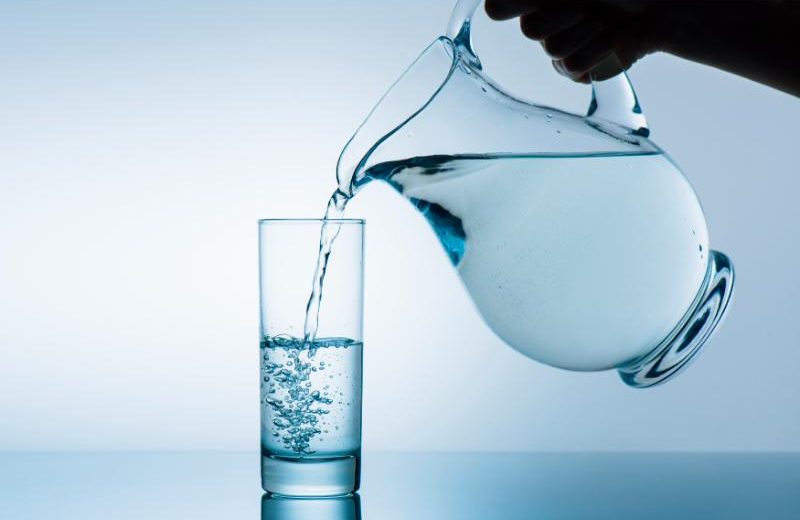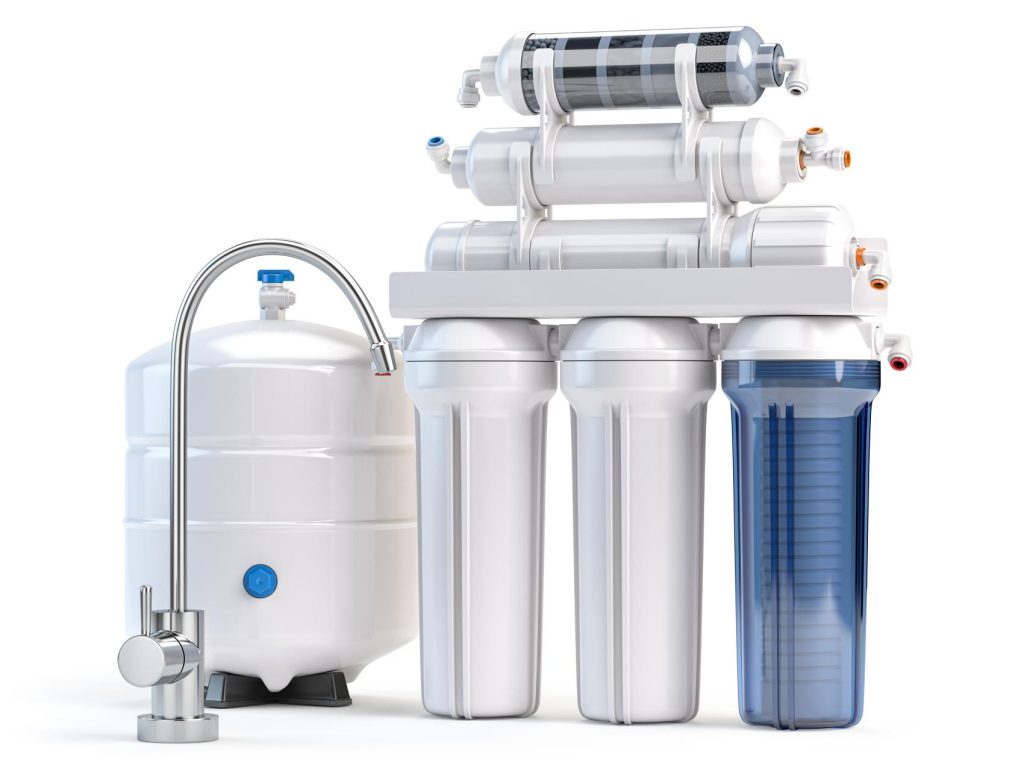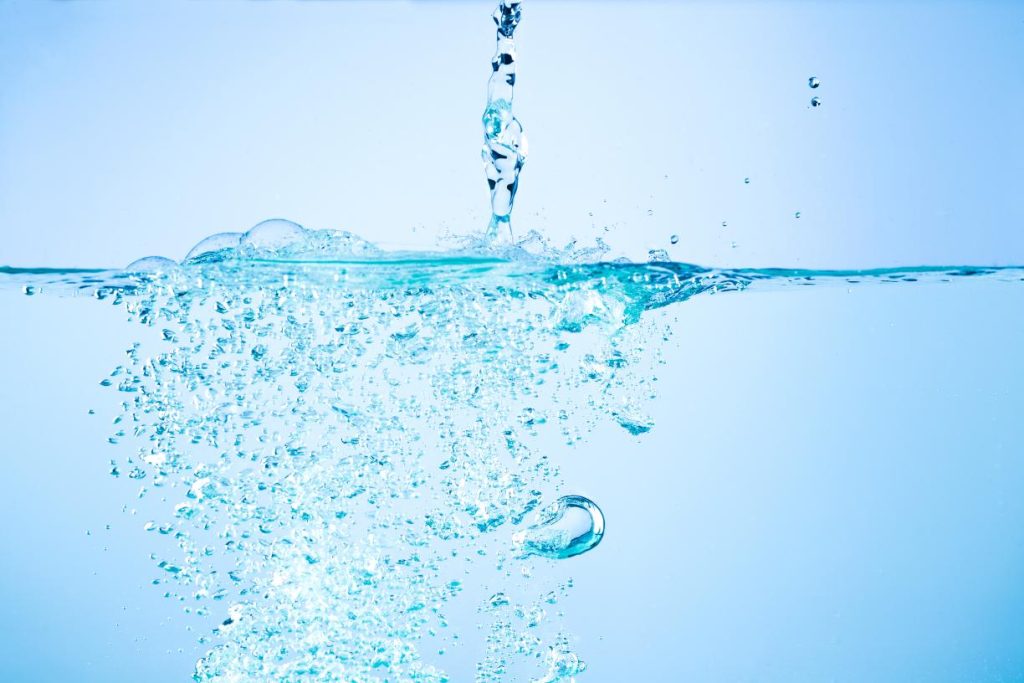WATER PURIFICATION


When water is referred to as ‘hard’ this simply means, that it contains more minerals than ordinary water. These are especially the minerals calcium and magnesium. The degree of hardness of the water increases, when more calcium and magnesium dissolves.
Magnesium and calcium are positively charged ions. Because of their presence, other positively charged ions will dissolve less easily in hard water than in water that does not contain calcium and magnesium.
This is the cause of the fact that soap doesn’t really dissolve in hard water.
Water softening is a technique that serves the removal of the ions that cause the water to be hard, in most cases calcium and magnesium ions. Iron ions may also be removed during softening.
The best way to soften water is to use a water softener unit and connect it directly to the water supply.
For water softening, three types of salt are generally sold:
– Rock salt
– Solar salt
– Evaporated salt
Rock salt as a mineral occurs naturally in the ground. It is obtained from underground salt deposits by traditional mining methods. It contains between ninety-eight and ninety-nine percent sodium chloride. It has a water insolubility level of about 0.5-1.5%, being mainly calcium sulphate. Its most important component is calcium sulphate.
Solar salt as a natural product is obtained mainly through evaporation of seawater. It contains 85% sodium chloride. It has a water insolubility level of less than 0.03%. It is usually sold in crystal form. Sometimes it is also sold in pellets.
Evaporated salt is obtained through mining underground salt deposits of dissolving salt. The moisture is then evaporated, using energy from natural gas or coal. Evaporated salt contains between 99.6 and 99.99% sodium chloride.
Softened water still contains all the natural minerals that we need. It is only deprived of its calcium and magnesium contents, and some sodium is added during the softening process. That is why in most cases, softened water is perfectly safe to drink. It is advisable that softened water contains only up to 300 mg/L of sodium.
In areas with very high hardness, the softened water must not be used for the preparation of baby-milk, due to the high sodium content after the softening process has been carried out.
SERVICES
Water Softener

SERVICES
Reverse Osmosis

Reverse Osmosis is a technology that is used to remove a large majority of contaminants from water by pushing the water under pressure through a semi-permeable membrane. Reverse Osmosis, commonly referred to as RO, is a process where you demineralize or deionize water by pushing it under pressure through a semi-permeable Reverse Osmosis Membrane.

Reverse Osmosis works by using a high-pressure pump to increase the pressure on the salt side of the RO and force the water across the semi-permeable RO membrane, leaving almost all (around 95% to 99%) of dissolved salts behind in the reject stream. The amount of pressure required depends on the salt concentration of the feed water. The more concentrated the feed water, the more pressure is required to overcome the osmotic pressure.
The desalinated water that is demineralized or deionized, is called permeate (or product) water. The water stream that carries the concentrated contaminants that did not pass through the RO membrane is called the reject (or concentrate) stream.
Virtually forever if you service it regularly and replace parts that wear out, like the storage tank and the ledge faucet.
Typical membrane life is about 3 to 5 years, depending on the nature of the water that it’s processing.
Distillers typically remove a few parts per million more of common mineral constituents like sodium. However, distillers lack efficiency when it comes to volatile chemicals with a low boiling point. E.g. chloramines, which many cities now use instead of chlorine as a disinfectant, aren’t as effectively removed by distillers. Reverse osmosis paired with carbon filters, however, does a very good job of removing evidence of chloramines. Unless volatile chemicals like chlorine are removed by carbon filtration before they enter the distiller, they will be released into the air or end up in distilled water. Nonetheless, both methods produce very pure water.
RO units remove about 95% of the mineral content, but the mineral issue is probably the most controversial question in drinking water purification. Experts on both sides of the issue speak convincingly. As long as water is palatable, it’s within the body’s acceptable range. The main issue with water is chemicals, not minerals. Whether water contains 30 or 3 parts per million calcium is not nearly as significant as the difference between 0.5 and 5 parts per million chloroform.

Whole home filtration solutions improve the water at the point it enters your home. They deliver cleaner, healthier water to every faucet for everyday use. This means you’re able to access filtered water throughout your house when you wash the dishes, make coffee, take a shower, do laundry and brush your teeth.
The whole home water filter gives you:
– Cleaner water without the bad smells/tastes
– Custom filtration specific to your home
– Minimized rust stains and scale buildup
– Seamless integration with your existing plumbing
Water problems can result in many different issues affecting your home. Signs that you may need a whole home water filter include:
– A rotten egg smell
– Streaks on your dishes
– Deposits on plumbing fixtures
– Dry hair or skin after showering
– Bad flavours in your drinking water
– Rust stains on your appliances
– Difficulty cleaning
– Corroded pipes
Depending on the specific whole home filter you choose, these systems can reduce a wide variety of contaminants, including:
– Calcium and magnesium (hard water)
– Chlorine
– Iron
– Sulphur
– Carbon dioxide
– Total dissolved solids
Whole home filtration systems work to filter specific contaminants from the entire home. Conversely, reverse osmosis systems specialize in reducing a broad range of contaminants in drinking water.
A whole home filter is usually installed at the point of entry (such as the main water line). And filters contaminants from your home’s entire water supply, including showers, appliances, faucets and more. Meanwhile, a reverse osmosis system works at the point of use (like under your kitchen sink) to provide safer, fresh-tasting drinking water.
The key difference between whole home filtration and reverse osmosis is the presence of a high-quality reverse osmosis membrane. This membrane reduces a wider variety of contaminants when compared to whole home filters, including those smaller in size.
SERVICES
Whole Home Filter

Whole home water filtration systems are hooked up directly to your home’s main water supply. From there, they filter out contaminants, and filtered water is then sent through your home’s pipes to feed into your faucets, showerheads, toilets, and water-using appliances.
Unlike other water filters that only clean small amounts of water at a time, whole-house water filter systems filter every drop of water in your home. These powerful filters provide far more than just drinking water; they give your entire household clean water to cook and clean with, too.
If you are considering a whole home water filter system for your home, then High Efficiency can help. We’ve researched whole-house water filtration systems so you don’t have to. Keep reading to find everything you need to know before you purchase.








